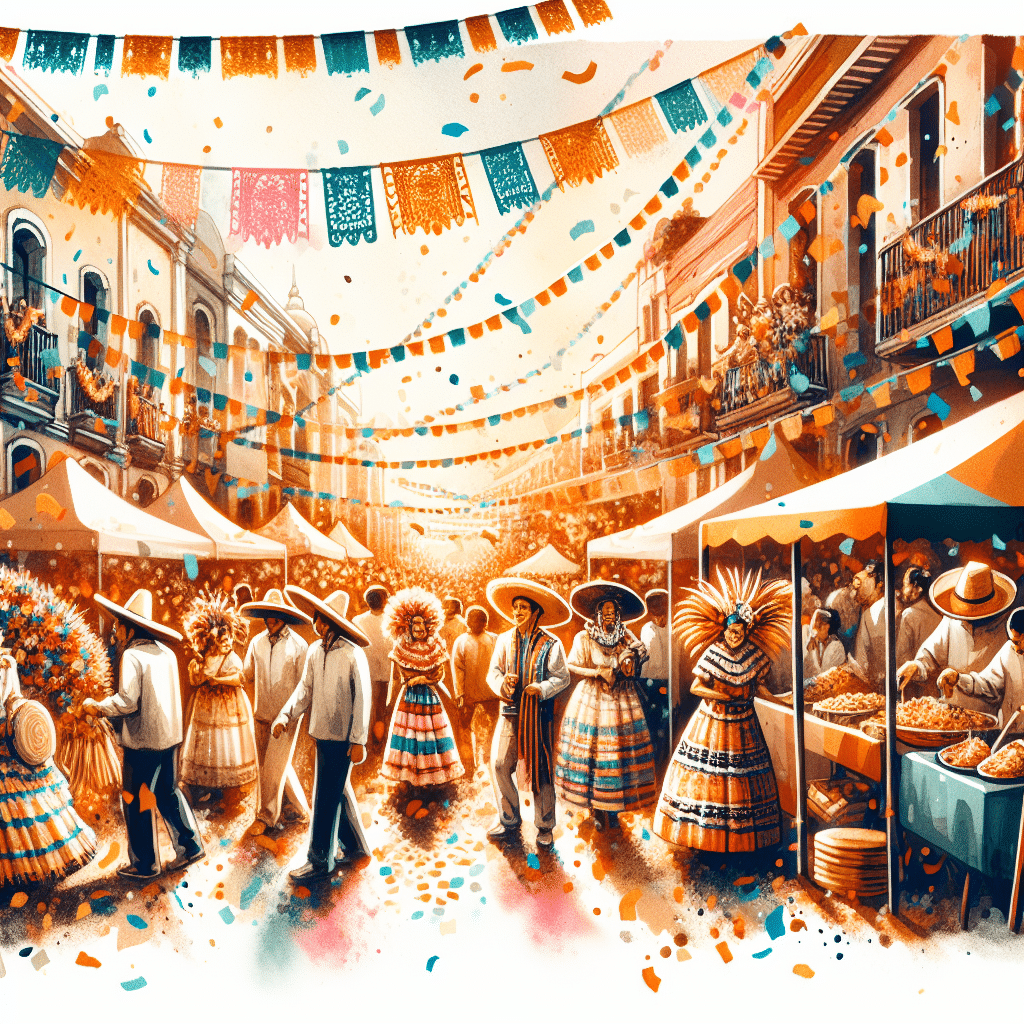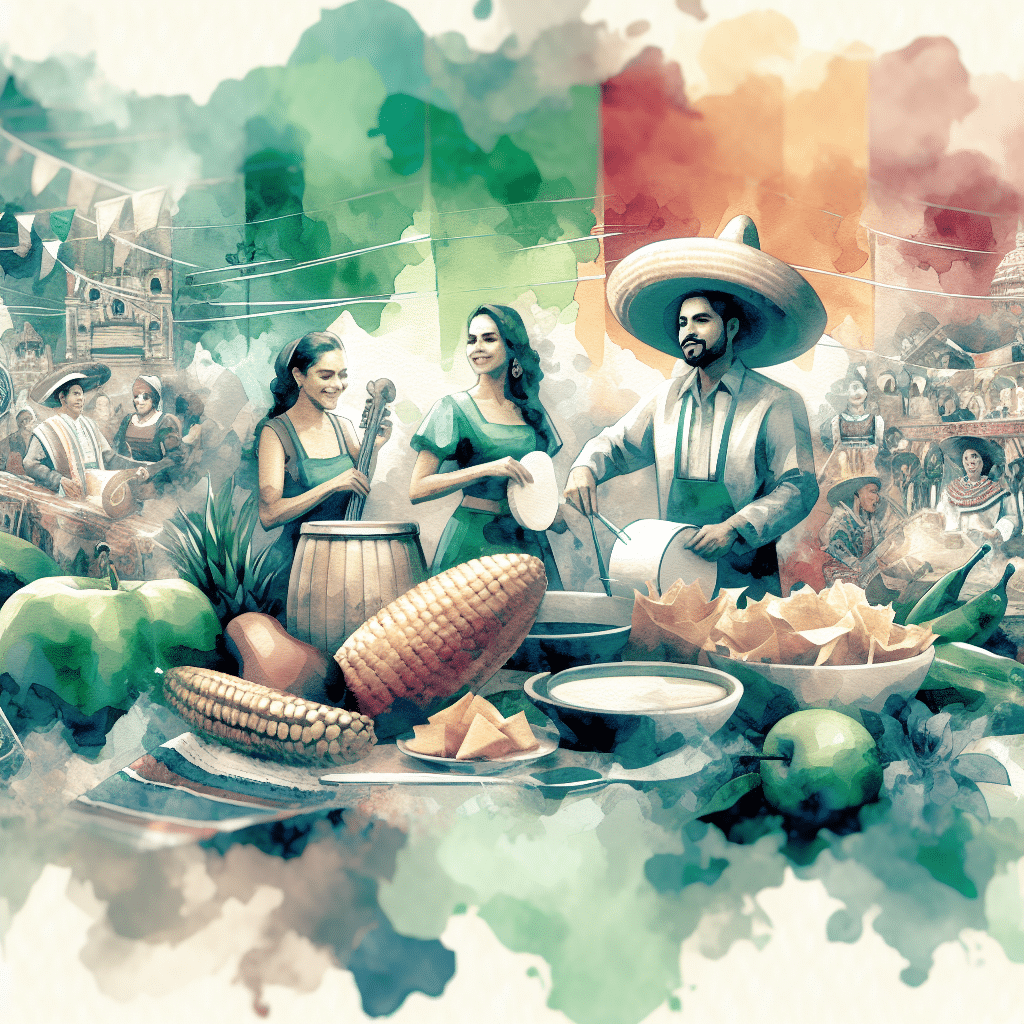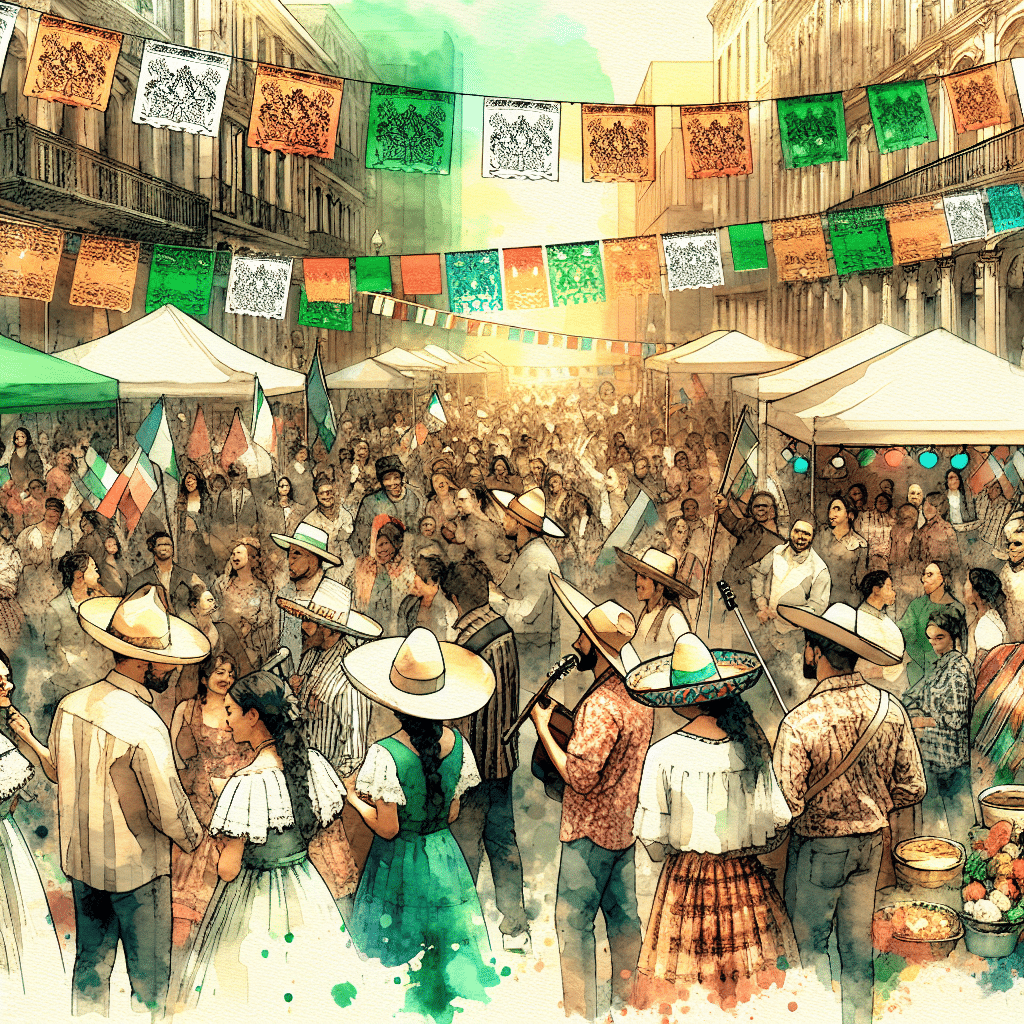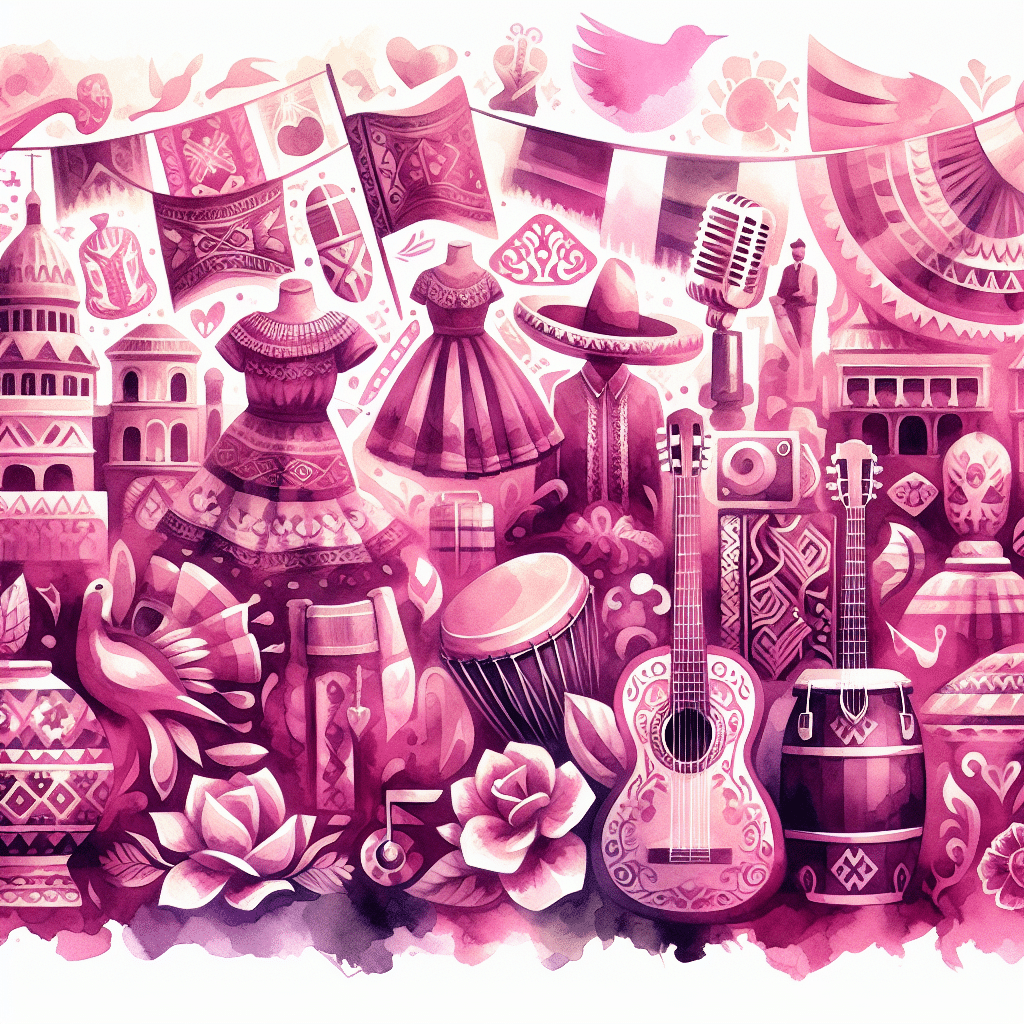
Traditional Latin American Festivals: Celebrating Culture and Heritage
Traditional Latin American Festivals
Latin America bursts with lively festivals that celebrate its rich culture and traditions. Let’s check out three standout festivals: Las Posadas, the Horseradish Festival in Oaxaca, and the Novena of Aguinaldos.
Las Posadas Tradition
Las Posadas is a cherished tradition in Mexico, Guatemala, Honduras, and parts of the southwestern United States. Starting on December 16 and lasting for nine nights, folks reenact Mary and Joseph’s journey before Jesus was born (History). Imagine families and friends parading through the streets, knocking on doors, and singing. It’s not just a religious observance but also a social event packed with food, piñatas, and fun.
This tradition blends Roman Catholic customs with the Aztec winter solstice festival and the celebration of the Aztec mother goddess Tonantzin. Talk about a cultural mash-up!
| Country | Dates | Activities |
|---|---|---|
| Mexico, Guatemala, Honduras, Southwestern U.S. | Dec. 16 – Dec. 24 | Processions, singing, piñatas |
Horseradish Festival in Oaxaca
The Horseradish Festival, or Noche de Rábanos, in Oaxaca, Mexico, is a one-of-a-kind event. Held on December 23, this quirky festival features oversized radishes intricately carved into nativity scenes, images of Oaxacan folklore, and even political caricatures (History). Ever wondered what a vegetable beauty pageant looks like? This is it!
Dating back to the late 19th century, the festival has grown into a major cultural event, attracting artists and spectators from all over. It’s a night where creativity blooms, and radishes steal the show.
| Location | Date | Highlights |
|---|---|---|
| Oaxaca, Mexico | Dec. 23 | Radish carvings, folklore displays |
Novena of Aguinaldos Celebration
The Novena of Aguinaldos is celebrated with great enthusiasm in Colombia, Ecuador, and parts of Venezuela. For nine nights leading up to Christmas, families gather for prayer, feasts, and religious songs (History). Think of it as a nightly Christmas carol session, but with empanadas and arepas.
The prayers were originally drafted by an 18th-century Franciscan missionary and later updated in the 19th century. This tradition not only brings families together but also keeps the festive spirit alive, making the wait for Christmas day feel like a joyous countdown.
| Country | Dates | Activities |
|---|---|---|
| Colombia, Ecuador, Venezuela | Dec. 16 – Dec. 24 | Prayers, feasts, religious songs |
These festivals are just a peek into the rich and diverse traditions of Latin America. For more on similar events, check out our articles on Hispanic cultural events and traditional Latino celebrations.
Festive Celebrations in Latin America
Latin America knows how to throw a party, and their festive celebrations are no exception. From the solemnity of Midnight Mass to the boisterous parrandas, to the colorful and spiritual Día de los Muertos, there’s a festival for every mood and occasion. Let’s jump into some of these iconic celebrations.
Midnight Mass Tradition
Known as La Misa de Gallo, Midnight Mass is celebrated by millions of Catholics across Latin America on Christmas Eve or December 25. This tradition started in the fifth century and serves as a collective vigil for the birth of Christ (History). Picture this: families dressing in their Sunday best, gathering under the starlit sky, and heading to church at the stroke of midnight. It’s like a spiritual New Year’s Eve, but with fewer champagne bottles and more candles.
| Country | Midnight Mass Attendance (%) |
|---|---|
| Mexico | 85 |
| Brazil | 70 |
| Argentina | 65 |
| Colombia | 80 |
Parrandas in Cuba and Puerto Rico
Parrandas are the ultimate holiday roving parties in Cuba and Puerto Rico. In Cuba, these celebrations are carnival-like, featuring lights, music, floats, and fireworks. Imagine Mardi Gras but with a tropical twist. In Puerto Rico, parrandas involve groups going from house to house, singing and playing music until they are let in. The hosts then join the group, and the party grows as it moves from one house to the next. Between traditional Christmas songs and improvised festive verses, it’s a musical conga line that no one can resist (History).
| Country | Key Features |
|---|---|
| Cuba | Lights, music, floats, fireworks |
| Puerto Rico | House-to-house singing, music, growing party |
For more on Latino cultural events, check out hispanic cultural events.
Día de los Muertos Festivities
Día de los Muertos, or Day of the Dead, is a UNESCO-recognized celebration dedicated to honoring deceased family members. This holiday originated in the Aztec era and is celebrated from October 31 to November 2. Families treat the deceased as honored guests, leaving offerings at gravesites or creating private altars at home. The spiritual home of this celebration is Oaxaca, but it’s celebrated across Mexico with traditional makeup, parades, and offerings to lost loved ones (Jacada Travel). It’s like Halloween, but with a lot more heart and a lot less candy.
| Country | Celebration Dates |
|---|---|
| Mexico | October 31 – November 2 |
For more insights into Latin American holiday traditions, visit latin american holiday traditions.
Latin America’s festive celebrations are as diverse as its people. From the reverent to the raucous, these events provide a window into the vibrant cultures that make up this dynamic region. Whether you’re attending a Midnight Mass, joining a parranda, or painting your face for Día de los Muertos, there’s always a reason to celebrate in Latin America. For more on traditional Latino celebrations, explore traditional latino celebrations.
Latin American Music: A Fiesta for Your Ears
Latin American music is like a spicy salsa that dances its way into your soul. Whether you’re grooving to salsa or vibing with reggaeton, the variety and richness of Latin music genres are simply unbeatable.
A World of Latin Music Genres
Latin music isn’t just about the chart-toppers like reggaeton and pop. It’s a treasure chest of sounds, each reflecting the unique culture of Latin American communities. Here’s a peek at some of the most popular genres:
- Salsa: Born in Cuba and Puerto Rico, salsa is the life of the party, perfect for dancing.
- Merengue: This fast-paced dance music from the Dominican Republic will get your feet moving.
- Vallenato: Folk music from Colombia, featuring the accordion, it’s like a musical hug.
- Tango: Argentina’s gift to the world, full of passion and drama.
- Bachata: Romantic tunes from the Dominican Republic, known for their smooth rhythms.
- Cumbia: A Colombian genre that blends Indigenous, African, and Spanish influences.
- Bolero: Slow ballads from Cuba and Mexico, ideal for serenades.
- Mexican Corridos: Storytelling songs from Mexico about heroes and outlaws.
- Guaracha: Fast-paced Cuban music, often with a humorous twist.
- Samba: Brazil’s lively, rhythm-heavy music that makes you want to dance.
| Genre | Origin | Key Instruments |
|---|---|---|
| Salsa | Cuba, Puerto Rico | Percussion, Brass |
| Merengue | Dominican Republic | Accordion, Saxophone |
| Vallenato | Colombia | Accordion, Caja |
| Tango | Argentina | Bandoneón, Piano |
| Bachata | Dominican Republic | Guitar, Bongos |
| Cumbia | Colombia | Drums, Flute |
| Bolero | Cuba, Mexico | Guitar, Piano |
| Mexican Corridos | Mexico | Guitar, Trumpet |
| Guaracha | Cuba | Percussion, Guitar |
| Samba | Brazil | Drums, Guitar |
Music: The Heartbeat of Latin Culture
In Latin America, music is more than just sound; it’s a way of life. From revolution to romance, Latin American artists have used music to express themselves and critique society. This was especially true in the Latin rock scene of the 1980s.
Music is a stress-buster and a way to connect with others. Growing up surrounded by music and dance fosters a sense of community and joy. It’s like a big, musical family reunion every day.
Love and romance are also deeply woven into Latin music. The dance elements create a special chemistry between partners, making relationships even more magical.
Latin music is the life of the party at celebrations and festivals. Whether it’s the Feast of the Assumption or any traditional Latino celebration, music keeps the culture vibrant and alive.
For more on Latin American festivals and the role of music, check out our sections on Hispanic cultural events and Latino heritage festivals.
Rich Cultural Heritage
Latin America’s cultural heritage is a colorful patchwork stitched from the legacies of ancient civilizations and a mix of ethnic influences. From the majestic temples of the Incas to the lively rhythms of today’s music, the region’s history and diversity shine through in every aspect of its culture.
Influence of Pre-Columbian Civilizations
Way before Europeans showed up, Latin America was buzzing with some of the world’s most advanced civilizations. The Mayans, Incas, and Aztecs built thriving societies across Mexico, Central, and South America, laying the foundation for today’s food and cultural traditions.
- Mayan Civilization: These folks were whizzes at astronomy and math. Their pyramids and temples still stand tall today.
- Inca Empire: Nestled in Peru’s Andean highlands, the Incas had unique farming techniques like terrace farming. Their culinary traditions are still a hit in Peru.
- Aztec Empire: Based in what’s now Mexico City, the Aztecs were known for their grand temples and intricate art. Their influence is still seen in Mexican food, from chocolate to chili peppers.
| Civilization | Location | Notable Contributions |
|---|---|---|
| Maya | Mexico, Central America | Astronomy, Architecture |
| Inca | Peru | Agriculture, Engineering |
| Aztec | Mexico | Art, Cuisine |
These ancient civilizations not only shaped the region’s history but also laid the groundwork for its rich cultural traditions. Their influence is still felt in the festivals, foods, and art of Latin America. Curious about these traditions? Check out the feast of the assumption for more insights.
Cultural Diversity in Latin America
Latin America is a melting pot of ethnicities and cultures, making it one of the most diverse regions around. This diversity is reflected in the region’s music, dance, food, and festivals.
- Ethnic Groups: Latin America is home to a wide range of ethnic groups, including Indigenous peoples, Europeans, Africans, and Asians. This mix has created a unique cultural blend that’s distinct to the region (Wikipedia).
- Cultural Practices: The culture of Latin America includes both high culture (literature and high art) and popular culture (music, folk art, and dance). Religion also plays a big role, with many Catholic feast days and Virgin Mary celebrations being central to community life (Wikipedia).
| Aspect | Description |
|---|---|
| High Culture | Literature, High Art |
| Popular Culture | Music, Folk Art, Dance |
| Religious Practices | Catholic Feasts, Indigenous Rituals |
Latin American music comes in many flavors, from the simple, rural conjunto music of northern Mexico to the sophisticated habanera of Cuba (Wikipedia). Venezuelan culture, for example, has been shaped by indigenous, African, and European Spanish influences (Wikipedia).
If you want to experience the region’s cultural celebrations firsthand, check out latino heritage festivals or explore traditional latino celebrations. It’s a great way to dive into Latin America’s rich cultural mosaic.
Latin American Food: A Flavor Fiesta
When it comes to food, Latin America throws a party for your taste buds. The region’s culinary traditions are as lively as a salsa dance and as colorful as a piñata. Let’s explore the mouth-watering world of traditional Latin American foods and the influence of indigenous ingredients.
Traditional Latin American Foods
From tacos to ceviche, Latin American cuisine is a flavorful journey reflecting its rich history and diverse cultures.
Tacos: A Mexican favorite, tacos are corn tortillas wrapped around fillings like meat, veggies, or cheese. Top them with chili sauce or enjoy them plain. It’s the ultimate street food and a must-have at any Hispanic cultural event.
Ceviche: This refreshing dish features fresh, raw fish cured in citrus juice, spiced with chili peppers, onions, and cilantro. Garnish with tomatoes, avocado, and corn. Popular in coastal countries like Peru and Ecuador, ceviche is perfect for a light, zesty meal.
Tortillas: A staple made from corn, tortillas are essential in dishes like fajitas, chile en nogada, and frijoles refritos. Their versatility makes them beloved across Latin America.
Pachamanca: A traditional Peruvian dish where meat, potatoes, and veggies are baked in an earthen oven. Reflecting Inca heritage, it’s a communal feast enjoyed during special occasions.
Anticuchos: Skewered and grilled meat, usually beef heart, marinated in vinegar and spices. Popular street food in Peru and Bolivia, adding a smoky flavor to the culinary scene.
Indigenous Ingredients: The Heart of Latin American Cuisine
Latin American culinary traditions are deeply rooted in the ingredients and techniques of its indigenous peoples, including the Mayans, Aztecs, and Incas. These civilizations have left a lasting legacy on the region’s food culture.
Corn (Maize): A staple for Mesoamerican people, corn is the backbone of many dishes. It’s used in tortillas, tamales, and drinks like chicha.
Potatoes: Originating from the Andean highlands, potatoes are key in many dishes. The Incas cultivated numerous varieties, and potatoes remain a cornerstone of Peruvian cuisine today.
Quinoa and Amaranth: These ancient grains were cultivated by the Incas and are now celebrated for their nutritional benefits. They are used in soups, salads, and as side dishes.
Chili Peppers: Used extensively for their flavor and heat, chili peppers are integral to Latin American cuisine. They add a spicy kick to everything from salsas to stews.
Fish and Seafood: Coastal regions, particularly in Peru, rely heavily on fish and seafood. Fresh catches are often used in dishes like ceviche, reflecting the importance of the ocean in the local diet.
| Ingredient | Region | Common Uses |
|---|---|---|
| Corn | Mesoamerica | Tortillas, tamales, chicha |
| Potatoes | Andean Highlands | Stews, side dishes |
| Quinoa | Andean Highlands | Soups, salads |
| Chili Peppers | Throughout Latin America | Salsas, stews |
| Fish and Seafood | Coastal Regions | Ceviche, soups |
Latin American culinary traditions offer a rich tapestry of flavors and ingredients that reflect the region’s diverse heritage. Whether you’re enjoying a taco in Mexico or savoring ceviche in Peru, these dishes provide a delicious connection to the past. For more on Latin American holiday traditions, explore our articles on Latin American holiday traditions and traditional Latino celebrations.
Famous Latin American Festivals
If you love a good fiesta, Latin America’s got some of the most colorful and lively festivals around. Let’s check out three of the biggest celebrations that’ll have you itching to book a flight south.
Rio Carnival in Brazil
The Rio Carnival in Brazil is the world’s biggest bash, pulling in seven million party-goers in 2019. This wild festival kicks off the Friday before Lent and wraps up on Ash Wednesday. You’ll see everything from samba school parades with massive floats to dancers in dazzling costumes, plus free street parties called “blocos.” If you want to dance till you drop, this is your spot.
| Event | Highlights |
|---|---|
| Sambadrome Parades | Huge floats, fancy costumes, choreographed dances |
| Blocos | Free street parties with live music and dancing |
For more on religious celebrations, check out our page on catholic feast days.
Fiesta de la Candelaria in Puno, Peru
Fiesta de la Candelaria in Puno, Peru, is a cultural blowout that mixes Catholic faith with Andean traditions to honor the Virgin of Candelaria. Held in February, this festival spans several days and features masses, a procession of dancers and musicians, and jaw-dropping choreographies with ancestral costumes. In 2014, UNESCO recognized this festival as an Intangible Cultural Heritage of Humanity.
| Event | Highlights |
|---|---|
| Masses | Religious services for the Virgin of Candelaria |
| Procession | Dancers and musicians in colorful, traditional costumes |
Check out similar celebrations with our article on virgin mary celebrations.
Feria de las Flores in Medellin, Colombia
The Feria de las Flores (Festival of Flowers) in Medellin, Colombia, is a blooming spectacle held in late July and early August. This festival celebrates the region’s flower industry and features stunning flower displays, a parade of classic cars, a procession of Paso Fino horses, musical concerts, and the famous silleteros parading their flower-laden silletas. This festival has been a part of Antioquia’s culture for over half a century (TourHero).
| Event | Highlights |
|---|---|
| Flower Displays | Impressive floral arrangements and installations |
| Silleteros Parade | Flower vendors showcasing their colorful silletas |
For more insights into cultural festivities, visit our section on hispanic cultural events.
These festivals give you a peek into the rich cultural mix of Latin America, blending tradition, music, dance, and community spirit. Whether you’re a seasoned traveler or just curious, these celebrations will leave you with unforgettable memories. For more on holiday traditions, check out latin american holiday traditions.




